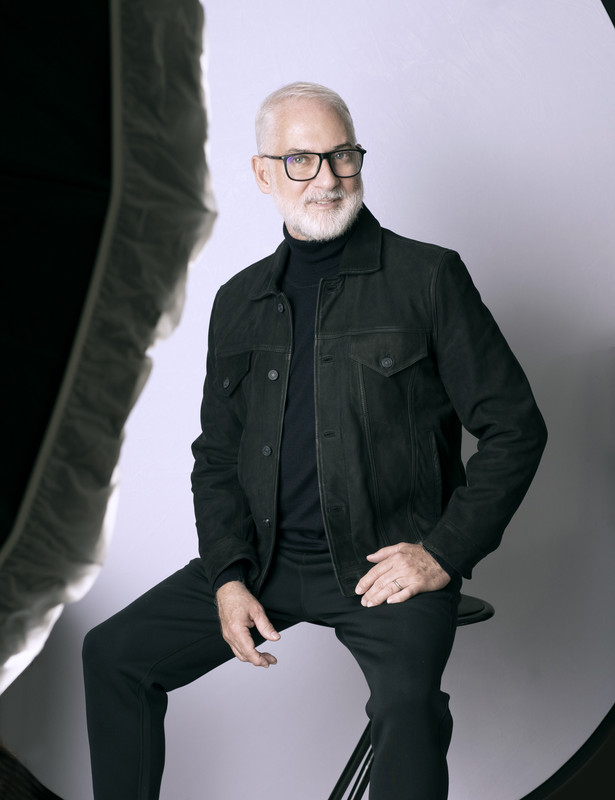
In fashion, reinvention is often a badge of honor. Designers chase trends, shed skins, and rebrand with every season. But Sully Bonnelly has built a career on something much rarer. He has remained himself. From the ateliers of Oscar de la Renta to the studios of his own label, from high fashion runways to televised retail, Bonnelly’s story is one of elegant continuity. His evolution has been quite relentless. His style has changed with time, but his voice has never wavered.
A Foundation of Discipline
Sully Bonnelly began not with fabric, but with form. Born in Santo Domingo in 1956, he studied architecture at the Universidad Autónoma de Santo Domingo. The discipline gave him a sense of spatial awareness that would later shape his approach to clothing. He did not abandon structure when he entered fashion. He carried it with him, refining it through color, rhythm, and silhouette.
His move to New York in 1980 was a turning point. He enrolled at Parsons School of Design and graduated in 1983. The transition was not effortless. He was an immigrant with a strong accent, starting from scratch in a city that could be both brutal and brilliant. But within that pressure, his identity began to sharpen.
Bonnelly’s early career was shaped by Oscar de la Renta. Working as de la Renta’s assistant gave him more than technical training. It gave him a blueprint for grace. De la Renta saw in him a designer who understood refinement not as decoration, but as discipline. Bonnelly never forgot it.
The Rise of a Name
In 1993, Bonnelly launched Sully Bonnelly Ltd., which later became Sully Bonnelly International. His collections were carried by Saks Fifth Avenue, Neiman Marcus, and Bergdorf Goodman. They stood out not because they were loud, but because they were assured. The garments held their shape. They moved with ease. There was structure, but also lightness.
He did not chase attention. He earned it. His designs were rooted in a belief that elegance should not require explanation. His clients felt that. The clothes were not about display. They were about presence.
By the late nineties, Bonnelly had become a recognized voice in American fashion. His Dominican heritage was never an accessory to his work. It was built into the rhythm of his collections, in the softness of his color palette, in the fluid confidence of his silhouettes.
Expanding the Frame
Bonnelly’s next chapter came not from staying still, but from stepping into new spaces. In 2000, he became the first Latin American designer to launch a collection on the Home Shopping Network. Sully Bonnelly Accents brought his work into living rooms across the country. It was a bold move, but never a compromise.
For Bonnelly, accessibility did not mean dilution. He believed that good design should reach more people. His garments on HSN retained the same core principles that defined his luxury collections. They were wearable, but thoughtful. They were mass market, but never generic.
This ability to move between markets without losing clarity is what set him apart. He later took on creative leadership roles with Isaac Mizrahi and Muse. In each position, he brought consistency. He never disappeared into the brand. He added to it, enriching its tone with his own.
The Strength of Consistency
Fashion often rewards spectacle. Bonnelly’s longevity challenges that. He has never relied on theatrics or public reinvention. His strength lies in refinement. Each stage of his career builds on the last. There are no dramatic pivots, no abrupt shifts in identity. What you see in his early work is still present today – a commitment to line, to balance, to grace.
Even in his bridal collections, launched in 2003, you see the same hand. The gowns are romantic without being fragile. They give the bride room to breathe. The dresses do not demand attention. They allow it.
This consistency is not a limitation. It is a philosophy. Bonnelly has never tried to be everything at once. Instead, he has returned to the same core questions. How does the garment move? What does it communicate? How does it make a woman feel?
A Designer Who Endures
The industry has honored him for this discipline. He is a member of the Council of Fashion Designers of America. He has received awards from the Dominican Republic, the United States Congress, and several institutions across fashion and culture. These honors matter. But they are not the reason his name still holds weight.
His legacy lies in how he made women feel seen. His garments speak softly, but they speak with certainty. They do not follow the noise. They hold their own.
Today, change is often mistaken for growth, Bonnelly reminds us of a different truth. Evolution does not require departure. It requires depth. His career is not a series of reinventions. It is a long, thoughtful conversation with himself, with his clients, and with the world around him.
Conclusion: Staying True, Moving Forward
Sully Bonnelly has never needed to shout. His presence has always been strongest in quiet refinement. He has worked across decades, platforms, and audiences, yet his vision remains intact. That is not an accident. It is a discipline.
To evolve without losing yourself is rare in any field. In fashion, it is nearly unheard of. Bonnelly has done it by returning again and again to what matters – not just how a garment looks, but how it lives.
His story is not about chasing relevance. It is about earning it. And holding it. Year after year, season after season.